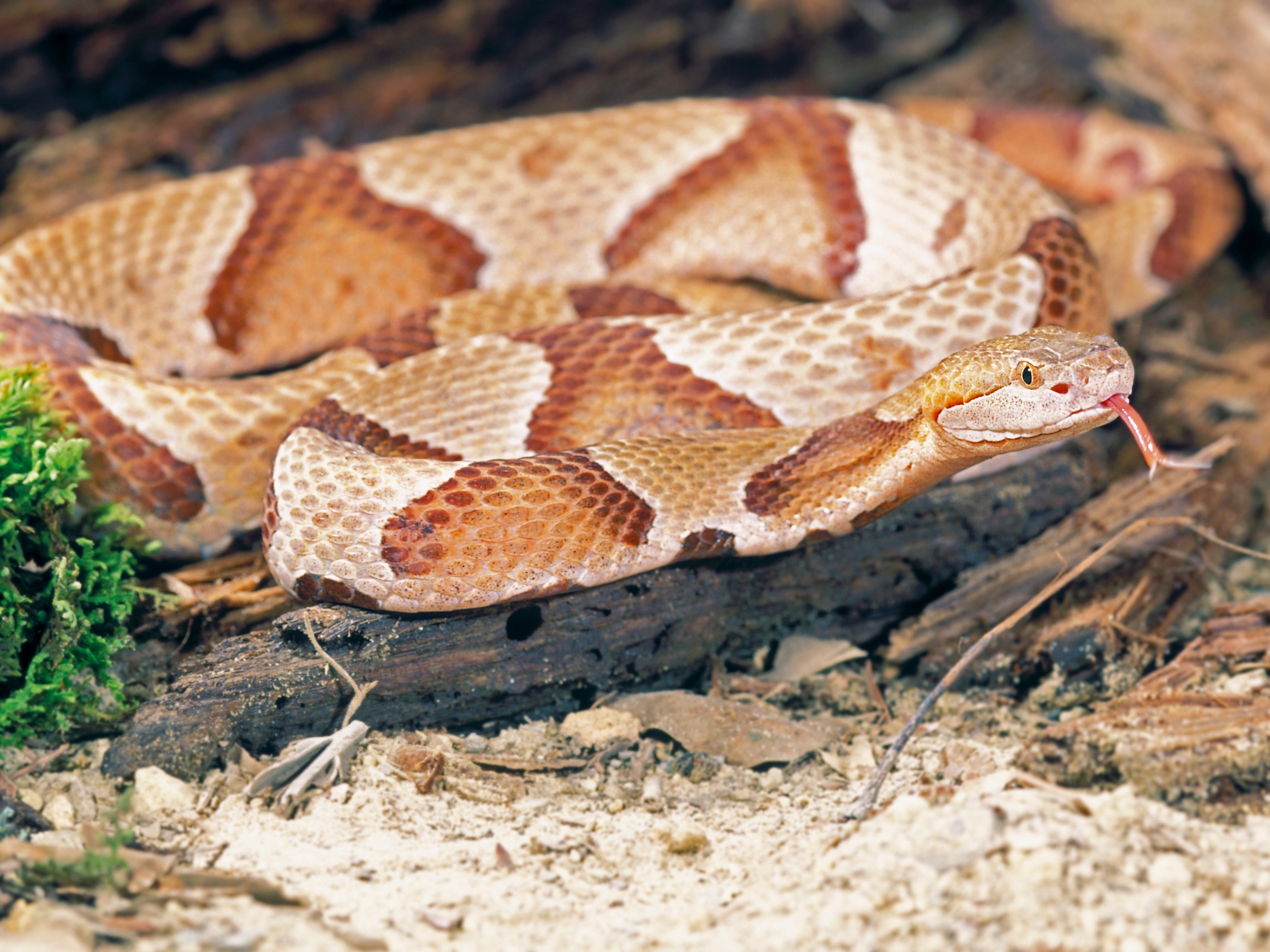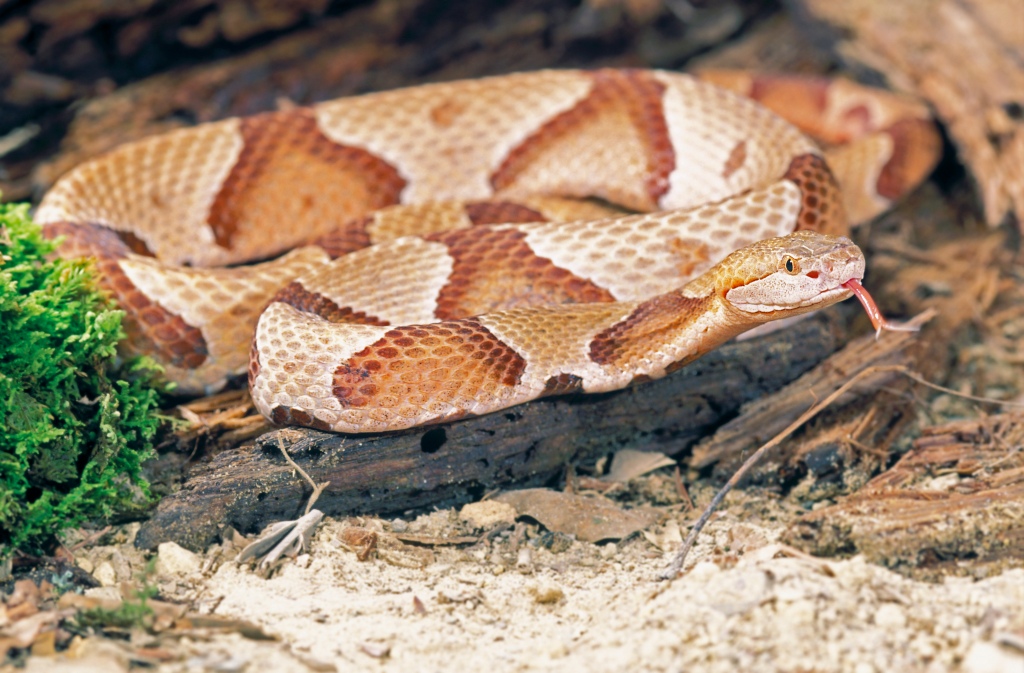1st Rut
Your Hunting Resource Home
Baby Copperhead

A Guide to Identifying the Baby Copperhead
I know, this isn’t an article on hunting monster whitetail deer or bugling bulls, but this is the right time of year for this article. Now is the time most whitetail hunters are hitting the woods summer scouting and getting stand sites setup. With that in my mind, we are fast approaching the time that female copperheads will be giving birth to baby copperheads.
Copperhead Characteristics

Copperheads mate in the spring, from February to May. The eggs then incubate in the mothers’ body until late August into September when they will give birth to live baby copperheads. Baby copperheads are between 8 and 10 inches long and come fully equipped with fangs and venom. A female can give birth to as many as a dozen baby copperheads. Adults range from 2 – 3 feet in length with a stocky body for their size.
Copperheads are easy to identify, with a light-brown body that is somewhat thick and features the wide dark brown bands. The darker brown bands are similar in shape to an hourglass. They also have the triangular head of a venomous pit viper. They are nocturnal during the heat of summer but will be out during the daylight in the other seasons.
//www.avantlink.com/link.php?ml=530462&p=222449&pw=279121
Baby Copperhead – Tail Tip
One differing feature on baby copperheads or immature copperheads is the color of the tail tip. Baby copperheads have a bright yellow tail tip that the snake uses to attract small animals for feeding. As the baby copperheads mature, the tail tip will turn brown in color as they no longer have to rely on the tail for attracting food.
Copperhead Bite / Venom
Copperheads bit humans more on average than any other snake species according to a NC State Study. For those that are unfortunate enough to get bit, the good news is the venom from a copperhead is not potent in comparison with other snakes. The bite / venom from a copperhead is painful but very rarely fatal. Children and the elderly are most at risk to a bite.
Unlike other venomous snakes a copperhead will give you no warning and strike if they feel threatened. It is up to you to avoid this snake. If you do get bit, please seek medical attention.
Let’s debunk the myth or urban legend that a baby copperheads bite is more deadly than an adult. This is not true; they are fully capable of biting a human at birth, but the baby copperheads’ venom is no more deadly than an adult.
Baby Copperhead Range
The copperhead snake covers a vast swath of the United States, ranging from New England into New Mexico. Chances are if you are deer hunter, you are living in this region. Your region could have any of the 5 subspecies of copperhead.
| Copperhead Subspecies | Range |
|---|---|
| Southern Copperhead | Southern Oklahoma – South Carolina Eastern Texas – Florida |
| Northern Copperhead | South Central Texas – Oklahoma |
| Osage Copperhead | Eastern Kansas – Missouri |
| Broad-Banded Copperhead | South Central Texas – Oklahoma |
| Trans-Pecos Copperhead | Western Texas – Mexico |
Copperhead Subspecies Range Table
//www.avantlink.com/link.php?ml=780429&p=222449&pw=279121
Wrap Up
I know this is not the normal post for the 1st Rut family, but if you are out checking trail cams or hanging stands this is something to be aware of. Baby copperheads will be out soon, so be careful and avoid getting bit. If you are interested in whitetail deer hunting content check out our Whitetail 101 section where we cover anything and everything whitetail deer.
